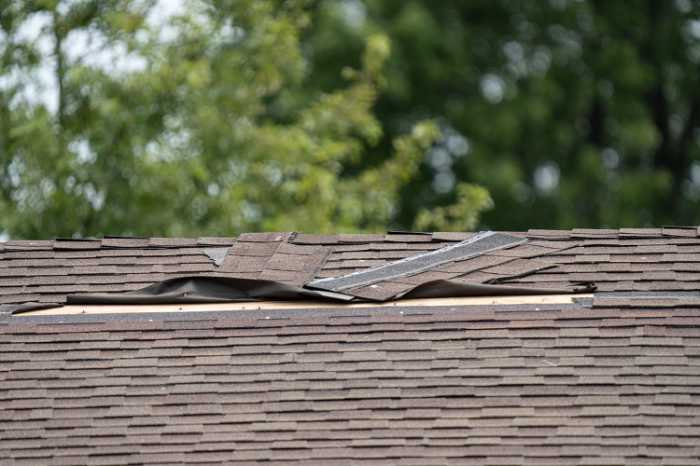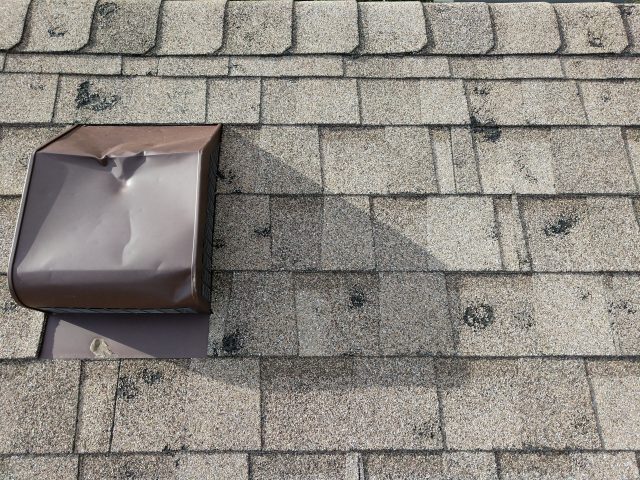If you're a Colorado Springs homeowner who's been enduring high winds for the past few months and need a new roof, you may be wondering why roofing contractors can't just come out and re-roof your house. Well, there are a few good reasons why that's not possible! In this blog post, we'll go over three of them. Stay safe and warm, Colorado Springs homeowners!
Reasons why you can't re-roof in high winds:
The Tear-off is a Disaster
One reason roofing contractors cannot do roof repairs during high wind speeds is that it scatters loose debris when you're tearing off the shingles and the underlayment.
Roofing materials include the shingles as well as the underlayment, which is normally going to be roofing felt or tar paper, but in some cases could be synthetic material instead. This is a “waterproofing” material placed on the roof deck underneath the shingles. It protects it from leaks and harsh weather by acting as an excellent barrier that prevents water intrusion into the home where shingle nails are installed.
High wind can scatter the debris all over the neighborhood, especially when tearing off an older roof that has brittle materials that typically tear off in smaller pieces. This becomes a problem because that debris can end up in the yards of many of your neighbors and takes the roofing crew a lot longer to clean up.
Calls Backs
If a roof is installed in high winds, especially in a dry and dusty location, airborne debris may get between the shingles. This affects the tar seal strip between them, and as a result, it won't be able to seal as well.
A tar seal strip is a thin piece of material used to seal the edge of a roof. The tar seal strip is affected by sand because it gets in between the seal and the roof, making it harder for the strip to stick to the roof, leading it to be prone to wind damage.
If they aren’t sealed properly it increases the chance the seal will break during the next high wind event, causing loose shingles to flap in the wind and potentially fly off. It can be expensive to replace the shingles on your roof if they get broken in a storm. A missing shingle will also leave your roof vulnerable to leaks.

Safety Issues
Working on a steep pitch or high roof during high winds is very risky. A steep pitch roof is a roof that is at a high angle. This makes it more dangerous for people to work because the strong winds put people off balance, increasing the fall risk.
Additionally, there is a risk of the workers being hit by tree limbs or tree branches carried by wind gusts. Trying to repair or replace a roof in high winds is not only bad for the roof, but it is also dangerous, even deadly, for the workers.
There is no reason to endanger the health and life of the workers for a roof. In most cases, a re-roof is not an emergency and it can wait a few days until the wind calms down. Additionally, the roofing crew shouldn’t have to work in unsafe conditions and risk injury.
Customer Satisfaction
As professional roofing contractors, we want homeowners to have complete satisfaction with our services. Wind damage will eventually lead to the need for roof repair. The damage caused by these severe storms will be given a thorough inspection to determine the price of the repair and whether or not a homeowner can make an insurance claim.
A homeowner's insurance may cover high winds damage. If you are experiencing roof damage due to high winds, knowing what is and isn't covered by your insurance policy is important. Many policies will cover the damage caused by high winds, but there may be a limit to how much they will pay. To make a roof insurance claim, you will need to provide your insurance company with proof.
With that in mind, although the most damage will occur during strong winds, further damage will happen if workers are expected to work on a roof in these bad weather conditions.
At the end of the day, it is best to take the advice of your professional roofing contractor, Homestead Roofing- We have your best interests at heart!




